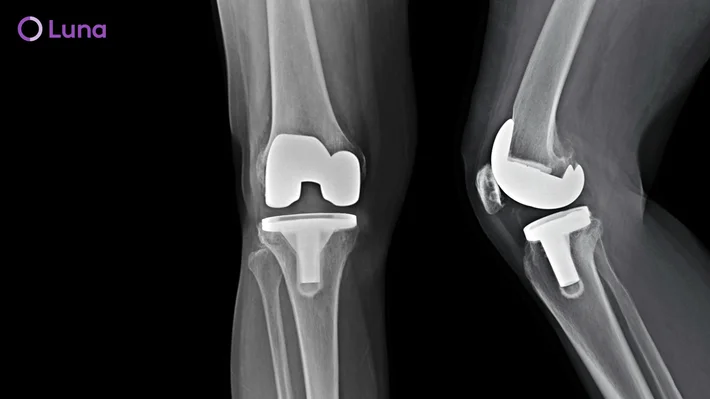
Meet with the best total knee replacement physical therapists in Chula Vista, California
Chula Vista, California, Luna’s physical therapists are experts when it comes to treating pain and increasing mobility in patients recovering from total knee replacement surgery. Our licensed PTs will work with you to create a physical therapy plan that helps you return to your daily activities safely and effectively, guiding you through exercises and stretches at a pace that’s designed for you.
With Luna, patients can get knee replacement physical therapy in the comfort of their homes. It’s physical therapy, delivered.

What is a total knee replacement?
Each year, more than 600,000 total knee replacement surgeries are performed in the United States alone. For many patients who experience daily knee pain due to arthritis or injury, a total knee replacement surgery is a safe and effective means of relieving pain, correcting leg deformities, and returning normal motion to the knee.
The knee is made up of the femur, the tibia, and the patella, which are all covered in cartilage and a thin lining called the synovial membrane. Damage to any one of these components can impede the knee’s normal functioning, causing reduced range of motion and frequent pain that can interfere with a patient’s daily life.
A total knee replacement surgery, also called a knee arthroplasty, involves replacing the surface of the bones with prosthetics to improve motion and prevent further wear and tear. Firstly, a surgeon will remove any damaged cartilage or bone, replacing them with metal components. Then, the kneecap is replaced with a plastic button, and a plastic spacer is inserted between the metal components to reduce friction.
Source: OrthoInfo

Physical therapy for total knee replacement in Chula Vista, California
Physical therapy helps patients restore strength and mobility after a total knee replacement. It’s typically recommended that patients exercise for 20 to 30 minutes, 2 to 3 times a day, although the frequency will vary from patient to patient. Physical therapists will also likely recommend that patients walk for half an hour several times a day.
Common strengthening exercises for knee replacements include quadriceps sets, straight leg raises, ankle pumps, knee straightening exercises, and knee bends. A physical therapist may also advise that a patient walk on a flat surface, likely with a walker or crutches at first. Later, the patient can advance to unassisted walking and stair climbing.
Source: OrthoInfo


















